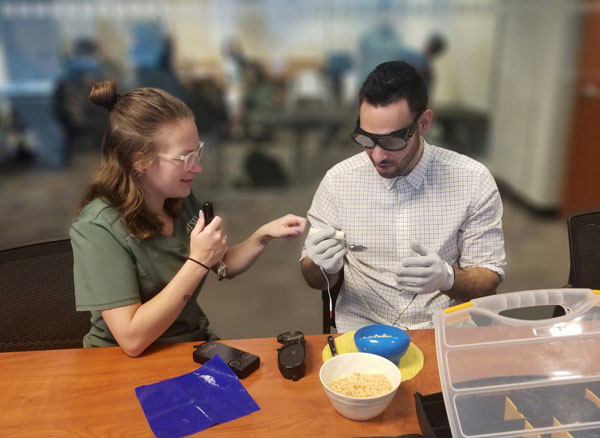ATSU-ASHS receives 10-year reaccreditation for Occupational Therapy master’s degree program
Posted: September 16, 2020
A.T. Still University-Arizona School of Health Sciences (ATSU-ASHS) was recently awarded a 10-year reaccreditation for the master of science degree in occupational therapy (OT) by the Accreditation Council for Occupational Therapy Education (ACOTE).
ATSU-ASHS received the maximum reaccreditation of 10 years after a virtual on-site evaluation had been completed. Jyothi Gupta, PhD, professor, OT department chair, worked closely with faculty and staff to ensure all department highlights and achievements were conveyed through their virtual presentation. This included a virtual tour of the Mesa, Arizona, campus, classroom walkthroughs, and an explanation of technology used by OT students.
“It is a different feel when you are on campus during an on-site visit. You can run around and give them what they want,” Dr. Gupta said. “I had to be so meticulous and organized so that if they asked for anything, I had electronic versions of all artifacts and could just turn around and quickly give it to them. They were very impressed by our arrangement.”
In 2016, the master’s program curriculum went through changes to align more closely with the doctorate of occupational therapy (OTD) curriculum. This offers an opportunity for students to start in the master’s program and finish in the doctoral program. To keep the pace aligned, the master’s and doctoral students share the same curriculum for the first year.
“At the end of the first year, if the master’s students want to transition and move onto the doctorate, they are allowed to do that,” Dr. Gupta said. “And the reason why we do it at the end of the first year is because in the fall of the second year, the doctorate only courses begin.”
Another highlight of ATSU’s OT program, noted by the accreditation team, is the interprofessional education that takes place between OT and other programs on campus. One example is the interprofessional education that occurs with ATSU’s School of Osteopathic Medicine in Arizona (ATSU-SOMA) students.
“Our OT students work with SOMA students and they use this GERontologic Test (GERT) suit, that is a simulator for aging,” Dr. Gupta said. “The OT students have the SOMA students experience the impact of various impairments on everyday activities. It is a simulation for them to know what their patients are actually seeing and experiencing with various medical conditions.”
This is an opportunity for SOMA students to fully understand what OT has to offer and how they can impact the lives of their patients when they come together in the workplace.
“OT students get SOMA students to perform a task, and then they explain how OTs can help address the issue,” Dr. Gupta said. “For example, if an OT is working with clients who have a tremor in their hand, OT can give them a weighted spoon, because the extra weight in the spoon compensates for and alleviates the tremor. The doctors may not know about these sorts of interventions, so we get to educate them about how OTs can contribute, so that people can still be independent and perform everyday activities.”
Typically, when a decision is made to grant the reaccreditation, the accrediting body will confirm requirements have been met and will provide any suggestions they have to enhance the program. ACOTE confirmed that the OT program met the requirements and had no suggestions to enhance the program, but rather noted that it was innovative having the master’s and OTD classes together.
“The masters and DPT students take the same board exam. It is a dual entry to the profession. We want our students to know that they enter the profession as novice therapists regardless of the degree,” Dr. Gupta said. “The program is committed to an inclusive environment and students opt for a degree program based on a variety of factors. I often tell my students that the degree does not determine who you become or how far you go. It is what you make of your degree. They are really part of one profession.”